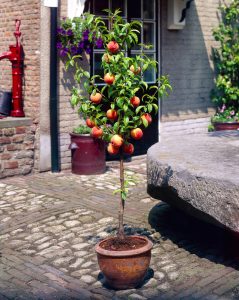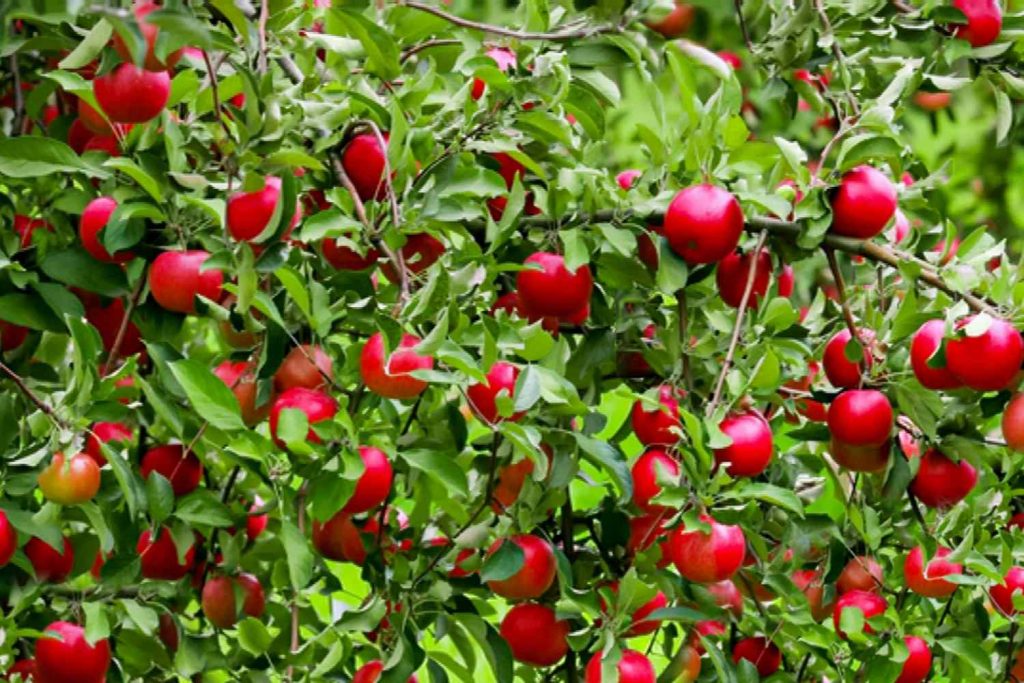Are peach trees self-pollinating?
Peach trees make a wonderful addition to any garden, providing visual splendor and excellent fruit. One recurrent question among gardeners is: Are peach trees self-pollinating? Understanding the pollination requirements of peach trees is critical to guarantee a plentiful harvest. In this detailed study, we will look at how peach trees self-pollinate, the elements that influence pollination, and the best strategies for increasing fruit output.
What is self-pollination?
Self-pollination happens when a bloom’s pollen fertilizes its ovules or those of another blossom on the same plant. For peach trees, this means that each tree can produce fruit without relying on pollen from another tree nearby.
Are peach trees self-pollinating?

Yes, most peach trees are self-pollinating, and they may bear fruit using pollen from their blooms. Each flower has male and female reproductive parts (stamens and pistils), allowing for self-fertilization. This trait is advantageous for gardeners with limited space, as only one tree is required for a fruitful crop. We note ‘Redhaven’, ‘Elberta’, and ‘Cresthaven’ for their exceptional self-pollinating powers. However, environmental conditions, good care, and stimulating pollinator activity can all contribute to increased fruit yield.
Do all peach trees self-pollinate?
Not all peach tree varieties self-pollinate. Some notable self-pollinating peach tree cultivars, however, are:
Redhaven is a famous cultivar known for its early-ripening fruit and self-pollinating abilities.
Elberta: Another popular variety that self-pollinates and yields huge, delicious peaches.
Cresthaven is known for its consistent self-pollination and high fruit quality.
Gardeners and orchardists prefer these types because they are self-pollinating and do not require cross-pollination with other cultivars.
Benefits of Peach Tree Self-Pollination
Space Efficiency
Self-pollinating peach trees are perfect for those with limited space in their gardens. There is no need to plant many trees to ensure a good crop, which makes them ideal for tiny yards or urban gardens.
Consistent Fruit Production
Self-pollinating trees produce more consistently due to their independence from external variables like other trees or pollinators.
Simplified Garden Design
Planting self-pollinating peach trees can make garden planning easier. For cross-pollination, there is no need to consider the proximity of suitable varieties or the timing of blooms.
How Peach Trees Self-Pollinate

Peach trees, known for their luscious fruit and exquisite flowers, have an intriguing technique of self-pollination. Understanding this technique is critical for gardeners and orchard owners seeking to increase fruit production. In this in-depth investigation, we will delve into the complexities of how peach trees achieve self-pollination, highlighting the aspects that lead to fruit development and production.
Anatomy of Peach Tree Flowers
Peach trees (Prunus persica) belong to the Rosaceae family and produce blooms with a unique structure that allows for self-pollination. Each peach bloom has both male and female reproductive components.
Stamens (male reproductive organs)
The male reproductive organs of the flower are the stamens, which have a filament and an anther on top. The anther contains pollen grains, which contain the male gametes required for fertilization.
Pistils (female reproductive organs)
The pistils are the female portions of the flower, consisting of a stigma, style, and ovary. During pollination, the stigma receives pollen; the style connects the stigma to the ovary; and the ovary houses the ovules, which grow into seeds once fertilized.
Peach Tree Self pollination
Self-pollination is an important reproductive mechanism in plants, in which pollen from the male reproductive organs (stamens) fertilizes the ovules in the same flower or another bloom on the same plant. This technique maintains seed production and genetic continuity by eliminating the need for external pollinators or different plants to pollinate.
Mechanisms of self-pollination
Pollen Production: Each flower produces pollen grains that include male gametes (sperm cells) within the stamen anthers.
Pollen Transfer: The anthers release pollen, which may land on the stigma of the same flower or another flower on the same plant.
Pollen Germination: After landing on the stigma, pollen grains hydrate and germinate, creating pollen tubes.
Pollen Tube Growth: Pollen tubes pass through the style (a tube-like structure that connects the stigma to the ovary) and reach the ovule within the ovary.
Fertilization happens when the pollen tube reaches the ovule, causing the fusing of male and female gametes to form a zygote.
Seed Development: Once fertilized, the ovule develops into a seed that has the genetic information needed to grow a new plant.
Related Posts:
Factors Affecting Peach Tree Self-Pollination
Environmental conditions
Optimal pollination in peach trees requires ideal environmental circumstances, such as moderate temperatures (60–75°F) during flowering and little wind and rain, which can impair pollen transmission.
Floral Health
Healthy peach blooms are required for proper self-pollination. Adequate nutrition, correct pruning to encourage airflow, and disease avoidance all contribute to healthy flower development.
Pollinator Activity
While peach trees pollinate themselves, attracting pollinators, such as bees, can improve fruit set and quality. Planting bee-friendly flowers close and avoiding pesticides can increase pollinator activity.
Maximizing fruit yield
To maximize fruit output in self-pollinating peach trees, consider the following tips:
Planting Location: Choose a sunny spot with well-drained soil.
Watering: Keep soil moisture levels stable during flowering and fruit development.
Fertilization: Use a balanced fertilizer based on the tree’s demands.
Pruning: Prune regularly to remove dead or diseased timber and promote healthy growth.
Pest Control: check for pests and illnesses, and use integrated pest management measures to limit damage.
FAQs
Can I harvest fruit from a single peach tree?
Yes, most self-pollinating peach plants can produce fruit without the need for another tree to pollinate. However, planting a large number of trees or ensuring the presence of pollinators such as bees may improve fruit set and production.
How do I determine whether my peach tree is self-pollinating?
Check the type of peach tree you’ve planted. ‘Redhaven’, ‘Elberta’, and ‘Cresthaven’ are among the varieties recognized for their ability to pollinate themselves. These trees’ flowers have male and female components, allowing them to pollinate themselves.
Will planting two peach trees produce more peaches?
Planting two appropriate types of peach trees can improve cross-pollination and potentially increase fruit yield. Self-pollinating trees can bear fruit on their own, but cross-pollination can result in larger fruit and a higher overall yield.
Do peach trees rely on bees to produce fruit?
While peach trees can pollinate themselves, bees and other pollinators can increase pollination efficiency and fruit quality. Planting bee-friendly flowers nearby and avoiding pesticides during bloom will help attract pollinators and increase fruit set.
Conclusion
Peach trees are often self-pollinating, making them a good choice for gardeners looking to enjoy fresh, homegrown peaches without having to plant many trees. Understanding the elements that influence pollination and implementing best practices will help you increase fruit production and ensure the health of your peach tree. ArborTrue is committed to supporting you in achieving a prosperous and plentiful peach harvest.




